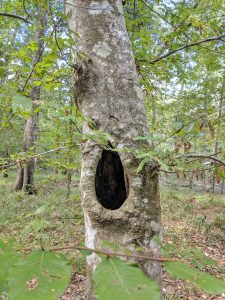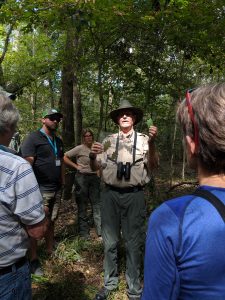
As FCV’s Communications Manager, I am lucky to write about Florida’s most beautiful natural communities every day. And as a student of the University of Florida’s Institute of Food and Agricultural Sciences (UF/IFAS) Florida Master Naturalist Program, I get to learn even more about the ecological factors that make land conservation so important.
Florida is incredibly diverse. Over 500 miles, our state transitions from temperate to tropical and holds unique topography. Upland communities include pinelands, hardwood forests, scrub, dry prairies, and rangelands. Plant and wildlife contribute to the health of their habitats in different ways and have adapted to play certain roles in a healthy ecosystem. In what is called resource partitioning, different species use different parts of a single resource. Take pine trees for example. At the top of the tree, an osprey depends on strong branches for her nest. Along lower branches, a golden orb spider uses her web to catch prey. At the ground level, squirrels and deer consume the tree’s spiny pinecones. One resource – a tree – makes an impact on countless species, big and small.

To conserve the balance of life in our state, and to maintain the ecological functions they provide, buying land is the most effective tool we have. This is especially true for species like the gopher tortoise. As a keystone species, gopher tortoises’ burrows house snakes, frogs, mice, beetles, and other natural neighbors, referred to as commensal species. When we conserve the habitats that tortoises rely on, we, in turn, save habitat for others.
Our reptiles and amphibians are a barometer for ecosystem health; they are directly impacted by water pollution and sustainable land use and management. Striped newts rely on ponds that dry up seasonally, and do not support fish predators. And climate change impacts like warming temperatures and shifting weather patterns alter how and when areas are wet or dry.
Everything is connected. Small, subtle changes such as too much or too little rain dictate whether a species will flourish or go extinct. The species we know and love – like easy-going gopher tortoises, alluring eastern indigo snakes, and adorable striped newts – are dependent on the fragile ecosystems that we destroy daily for the sake of development. We must acquire and manage these lands for the sake of habitat – not just because we love birds and bees, but because their health is a testament to ours.

